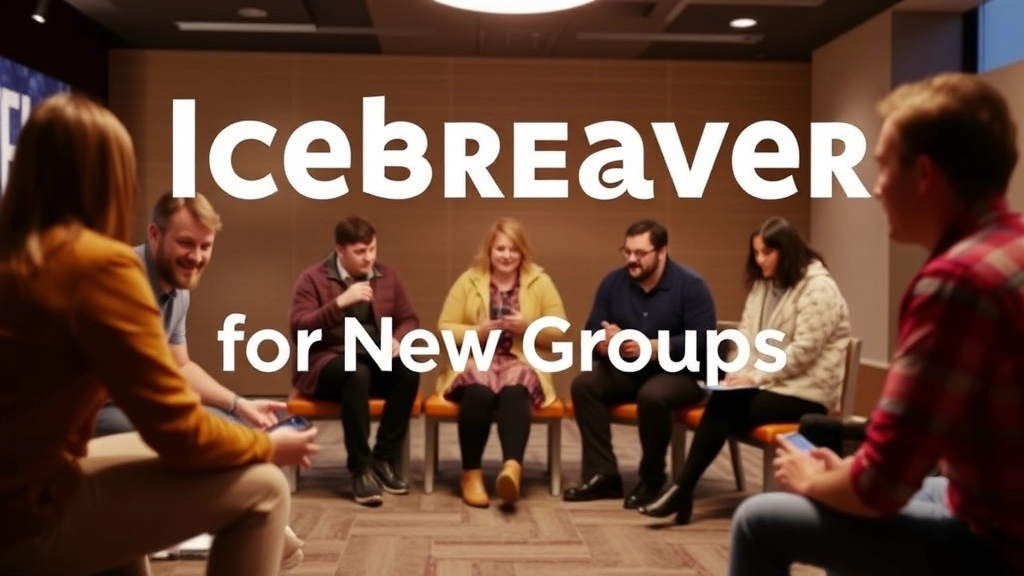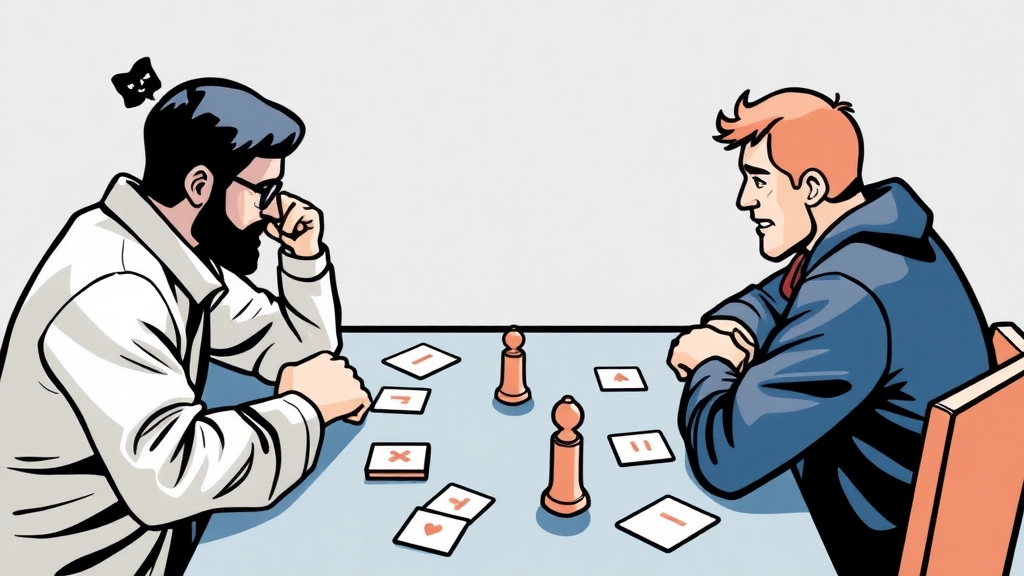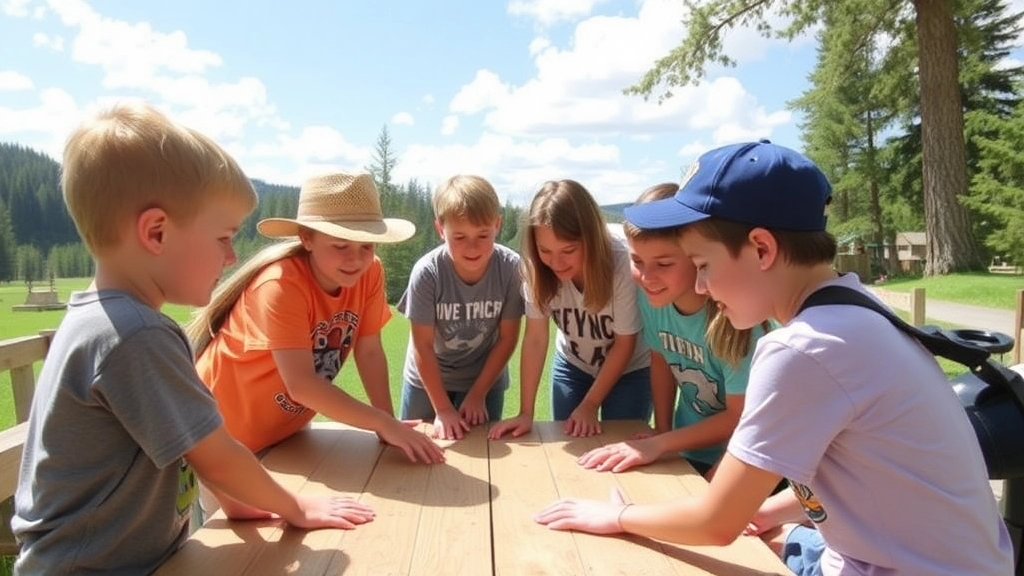Innovative Summer Camp Team Building Activities
Are you looking for innovative ways to strengthen your team’s bond while enjoying the summer sun? Look no further! This article delves into a variety of Summer Camp Team Building Activities designed to foster teamwork, enhance communication, and build trust among team members. From outdoor challenges and problem-solving activities to trust-based games and water-themed competitions, we’ve got you covered with engaging and effective exercises.
Outdoor Team Building Challenges
We kick off with outdoor team building challenges that break the monotony of office life, followed by problem-solving group activities aimed at getting everyone on the same page. Trust-based games help build essential foundations, while icebreaker activities ease the awkwardness of new groups.
Activity Highlights
- Outdoor challenges
- Problem-solving group activities
- Trust-based games
- Icebreaker activities
- Water-themed competitions
- Cooperative strategy games
- Group relay races with a twist
- Leadership development activities
- Creative problem-solving workshops
Finally, communication skill enhancement games ensure your team communicates effectively and efficiently.
Outdoor Team Building Challenges
Are you tired of the same old team-building exercises that feel more like a chore than a fun experience? Do you want to create stronger bonds within your team while enjoying the great outdoors? You’re in the right place. Let’s dive into some Outdoor Team Building Challenges that are not only engaging but also effective.
Why Outdoor Team Building?
Outdoor team building challenges are a fantastic way to break the monotony of office life. They offer a breath of fresh airâliterallyâand provide a unique setting to foster teamwork, communication, and problem-solving skills. Plus, who doesn’t love a bit of sunshine and fresh air?
Common Concerns Addressed
- “Will everyone participate?”: Outdoor activities can be tailored to suit all fitness levels and interests.
- “What if the weather is bad?”: Always have a backup plan, like indoor versions of the outdoor games.
- “Is it worth the investment?”: The benefits of improved team cohesion and morale far outweigh the costs.
Types of Outdoor Team Building Challenges
Obstacle Courses
Obstacle courses are a classic for a reason. They challenge physical abilities and require teamwork to navigate successfully.
- Set Up: Use ropes, tires, and other simple materials.
- Goals: Enhance problem-solving and physical fitness.
- Pro Tip: Mix up the course regularly to keep it interesting.
Scavenger Hunts
Scavenger hunts are perfect for promoting teamwork and strategic thinking.
- Set Up: Create a list of items to find or tasks to complete.
- Goals: Improve communication and strategic planning.
- Pro Tip: Include clues that require solving puzzles for an added layer of challenge.
Trust Falls and Trust Walks
These activities are all about building trust within the team.
- Set Up: One person falls back, trusting their team to catch them.
- Goals: Foster trust and reliance among team members.
- Pro Tip: Start with simple exercises and gradually increase difficulty.
Outdoor Escape Rooms
Yes, you can take the popular escape room concept outdoors.
- Set Up: Create puzzles and challenges that teams must solve to ‘escape.’
- Goals: Promote problem-solving and teamwork.
- Pro Tip: Use natural elements like trees and rocks as part of the puzzles.
Relay Races with a Twist
Relay races are great for building team spirit and healthy competition.
- Set Up: Traditional relay race but add unique challenges (e.g., balancing an egg on a spoon).
- Goals: Enhance coordination and teamwork.
- Pro Tip: Rotate team roles to ensure everyone participates equally.
Real-Life Example
I remember organising an outdoor team-building event for a tech company. We set up a scavenger hunt in a local park, and the teams had to solve riddles to find the next clue. Not only did it bring out everyone’s competitive spirit, but it also helped break down barriers between departments. By the end of the day, everyone was laughing and working together like a well-oiled machine.
Problem-Solving Group Activities

Ever been stuck in a meeting where no one can agree on anything? Yeah, me too.
Problem-solving group activities are the antidote.
They get everyone on the same page, fast.
Why are they important?
Teamwork isn’t just a buzzword. It’s the backbone of getting things done.
When we solve problems together, we learn how to communicate better, trust each other, and think outside the box.
Types of Problem-Solving Activities
Let’s break it down:
- Escape Rooms
- You’re locked in a room.
- You have one hour to get out.
- Clues are everywhere, but you need to work together to find them.
- Puzzle Challenges
- Think jigsaw puzzles, but with a twist.
- Each piece is a clue to the next.
- You can’t solve it alone; you need your team.
- Role-Playing Scenarios
- You’re given a situation.
- Each person takes on a role.
- You have to navigate the scenario to find a solution.
Why These Work
- Escape Rooms: Force you to communicate and think fast.
- Puzzle Challenges: Teach you to see the big picture.
- Role-Playing Scenarios: Help you understand different perspectives.
Real-World Example
Remember that time when your team couldn’t decide on a marketing strategy?
Imagine if you’d done an escape room together first.
You’d have learned how to communicate under pressure, making that strategy meeting a breeze.
How to Implement These Activities
- Start Small: Begin with a simple puzzle challenge.
- Mix It Up: Don’t stick to one type of activity.
- Debrief: Always discuss what you learned afterward.
Benefits
- Improved Communication: You learn to talk and listen.
- Better Collaboration: You understand each other’s strengths and weaknesses.
- Enhanced Problem-Solving Skills: You get better at thinking on your feet.
Trust-Based Team Games
Ever wondered why your team isn’t clicking as well as it should? Or why there’s a lack of genuine collaboration? Trust might be the missing piece. Trust-based team games are designed to build that essential foundation. Let’s dive into some engaging activities that can transform your team dynamics.
Why Trust Matters
Before we get into the games, let’s talk about why trust is crucial. Without trust, communication falters, and collaboration suffers. Imagine trying to build a house without a solid foundation. It’s the same with teams. Trust is the bedrock upon which everything else stands.
Classic Trust Fall
Yeah, I know, it sounds cliché, but the Trust Fall is a classic for a reason. Here’s how you can make it effective:
- Pair up team members: One person stands with their back to their partner.
- Arms crossed: The person falling crosses their arms over their chest.
- Fall back: They fall backward, trusting their partner to catch them.
Pro Tip: Start with small falls and gradually increase the height as trust builds.
Blindfold Navigation
This one’s a bit more interactive and fun. Blindfold Navigation requires one team member to be blindfolded while another guides them through an obstacle course.
- Set up obstacles: Use chairs, cones, or any office supplies.
- Guide with words: The guide can only use verbal instructions.
- Swap roles: Once done, switch roles to ensure everyone gets a turn.
Pro Tip: This game not only builds trust but also enhances communication skills.
Human Knot
The Human Knot is a fantastic game for breaking down barriers and building trust.
- Form a circle: Have everyone stand in a circle.
- Grab hands: Each person grabs the hand of someone across the circle.
- Untangle: Without letting go, the group must untangle themselves into a circle again.
Pro Tip: Encourage open communication and patience. This game can get a bit tricky, but that’s the point!
Trust Walk
The Trust Walk is another blindfold activity, but this one’s a bit different.
- Pair up: One person is blindfolded, and the other acts as a guide.
- Outdoor setting: Take this outside for added challenge and fun.
- Silent guide: The guide can only use non-verbal cues to direct their partner.
Pro Tip: This game builds a deeper level of trust as team members rely on non-verbal communication.
Real-Life Example: Trust in Action
I remember a time when our team was struggling with trust. We decided to try the Trust Fall during a retreat. Initially, there was hesitation, but as we progressed, the atmosphere changed. People started opening up, and the trust built during that exercise translated into our work. We saw improved collaboration and communication almost immediately.
For more tips on team-building activities, check out our Top Summer Camp Field Trip Ideas for 2024.
Icebreaker Activities for New Groups

So, you’re staring at a room full of strangers. Awkward, right?
No one likes that.
But guess what?
Icebreakers can turn that around.
Why Icebreakers Matter
- Break the Silence: No one wants to be the first to talk. Icebreakers do that for you.
- Build Connections: Get people talking and laughing. Instantly.
- Set the Tone: Fun and engaging from the get-go.
Let’s dive into some killer icebreaker activities.
Two Truths and a Lie
Classic.
Each person tells three statements about themselves. Two are true, one is a lie.
- Why it works: It’s fun and revealing.
- Pro tip: Keep the lies believable to make it interesting.
Human Knot
Sounds weird, but it’s gold.
Everyone stands in a circle, grabs hands with two different people not next to them, and then tries to untangle the knot without letting go.
- Why it works: Forces communication and teamwork.
- Pro tip: Start with smaller groups if you have a large team.
Speed Networking
Think speed dating, but less cringey.
Pair up, set a timer for two minutes, and chat. When the timer goes off, switch partners.
- Why it works: Quick and efficient.
- Pro tip: Prepare some fun questions to get things rolling.
Would You Rather
Simple, yet effective.
Ask a series of “Would you rather” questions.
- Why it works: Easy to answer, sparks conversation.
- Pro tip: Keep the questions light-hearted.
The M&M Game
Grab a pack of M&Ms. Each colour represents a different question category. Pick an M&M, answer the corresponding question.
- Why it works: Combines fun and conversation.
- Pro tip: Use Skittles if you prefer.
Real Talk
Icebreakers aren’t just fluff. They’re the foundation of a cohesive team.
So, next time you’re faced with a new group, don’t skip the icebreakers.
Dive in, make it fun, and watch the magic happen.
Got any favourite icebreakers? Drop them in the comments.
Ready to build stronger connections? Start with these icebreakers and see the difference.
Water-Themed Team Building Competitions
Ever wondered why your team isn’t gelling as well as it could be? Maybe you’ve tried the usual team-building exercises, but nothing seems to stick. Well, have you thought about water-themed team building competitions? These activities are not only fun but can significantly boost team spirit and cooperation. Let’s dive into it (pun intended).
Why Water-Themed Competitions?
Water-themed team building competitions are an excellent way to break the ice and build camaraderie. The unique setting and activities force everyone to step out of their comfort zones. Plus, who doesn’t love a bit of splashing around, especially when the weather is warm?
Benefits of Water-Themed Team Building
- Enhances Communication: When you’re in the middle of a water relay race, clear and quick communication is crucial.
- Builds Trust: Activities like raft building or water balloon toss require a high level of trust among team members.
- Promotes Problem-Solving: Water-themed challenges often involve puzzles or tasks that require creative solutions.
- Encourages Physical Activity: Let’s face it, sitting in an office all day can be draining. These activities get everyone moving and shaking.
Popular Water-Themed Activities
Raft Building
Ever tried building a raft with your team? It’s a fantastic way to test problem-solving skills and teamwork.
- Materials: Provide basic materials like barrels, ropes, and planks.
- Objective: Teams need to build a raft that can carry them across a body of water.
- Outcome: This activity not only promotes teamwork but also highlights individual strengths and weaknesses.
Water Balloon Toss
Simple yet effective, the water balloon toss is a classic.
- Materials: Water balloons, obviously.
- Objective: Teams of two toss a water balloon back and forth, taking a step back after each successful catch.
- Outcome: This activity builds trust and improves coordination.
Kayak Relay Race
If you have access to kayaks, this one’s a winner.
- Materials: Kayaks, paddles, life vests.
- Objective: Teams race against each other in a relay format.
- Outcome: This activity is excellent for building endurance and teamwork.
Slip ‘n Slide Challenge
Who says you can’t have fun while building a strong team?
- Materials: Large plastic sheets, water, soap.
- Objective: Teams compete to see who can slide the farthest or complete a course the quickest.
- Outcome: This activity is great for breaking down barriers and having a good laugh.
Tips for Organising Water-Themed Competitions
- Safety First: Always ensure that safety measures are in place. Life vests, first aid kits, and lifeguards are a must.
- Clear Instructions: Make sure everyone knows the rules and objectives before starting.
- Team Balance: Try to balance the teams in terms of skill levels and strengths.
- Feedback Session: After the activities, have a debriefing session to discuss what went well and what could be improved.
Real-Life Example
I remember organising a water-themed team-building day for a tech company. They were struggling with communication and trust issues. After a day of raft building and water balloon tosses, the difference was night and day. People were laughing, talking, and most importantly, working together more effectively. It was like magic, but it was just good old-fashioned team building.
Cooperative Strategy Games

Ever wondered how to get your team to work like a well-oiled machine?
Cooperative strategy games might be your answer.
These games are all about teamwork, planning, and executing strategies together.
Let’s dive into why these games are a game-changer (pun intended).
Why Cooperative Strategy Games?
- Boost Collaboration: These games force everyone to work together. No lone wolves here.
- Enhance Communication: You can’t win if you’re not talking. Clear, concise communication is key.
- Develop Problem-Solving Skills: Real-time challenges need real-time solutions.
- Build Trust: You’ll need to rely on each other to succeed.
Popular Cooperative Strategy Games
- Escape Rooms:
- What’s more thrilling than being “locked” in a room with your mates?
- Solve puzzles and find clues to “escape” within a set time.
- Perfect for testing your team’s problem-solving and communication skills.
- Board Games:
- Pandemic: Work together to stop global outbreaks.
- Forbidden Island: Collect treasures and escape before the island sinks.
- These games require strategic planning and teamwork.
- Virtual Strategy Games:
- Keep Talking and Nobody Explodes: One person defuses a bomb while others give instructions from a manual.
- Great for remote teams.
How to Implement These Games
- Set Clear Objectives: What do you want to achieve? Better communication? Improved problem-solving?
- Choose the Right Game: Match the game to your team’s interests and skill levels.
- Debrief After the Game: Discuss what worked, what didn’t, and how you can apply these lessons to real-life projects.
Real-Life Example
I once took my team to an escape room.
We had to find clues and solve puzzles to get out.
We quickly realised that listening to each other was crucial.
We didn’t escape on time, but we learned a lot about our communication gaps.
Group Relay Races with a Twist
Alright, let’s talk about Group Relay Races with a Twist. You know, those classic relay races where everyone just runs from point A to point B? Yeah, we’re not doing that. We’re spicing things up. Why? Because nobody wants to do the same old boring stuff, right? And let’s be honest, the whole point is to get everyone involved, engaged, and working together.
Why Group Relay Races with a Twist?
Ever wondered why some team-building activities just fall flat? It’s because they lack that element of surprise and excitement. Group relay races with a twist bring in unpredictability, making everyone stay on their toes. Plus, they’re a fantastic way to:
- Boost team morale
- Encourage collaboration
- Improve communication skills
How to Add a Twist
So, how do we make these relay races more interesting? Here’s a list of some cool twists you can add:
- Obstacle Courses: Throw in some hurdles, tunnels, and balance beams. Make it a mini-adventure.
- Costume Relay: Each team member has to put on a funny costume before running their leg of the race.
- Puzzle Pieces: Each runner collects a piece of a puzzle, and the team has to assemble it at the end.
- Three-Legged Race: Tie teammates’ legs together. It’s awkward but hilarious.
- Water Balloon Relay: Carry a water balloon on a spoon. If it drops, you start over.
Real-Life Example
Last summer, we had this epic relay race at our team retreat. We combined a three-legged race with a puzzle piece challenge. Imagine the chaos and laughter when people were trying to run while tied together, then quickly assembling a puzzle. It was a blast, and everyone was talking about it for weeks. The best part? The team that struggled the most initially ended up winning because they communicated the best. Talk about a morale booster!
Benefits of Twisted Relays
Here’s why these twisted relays work so well:
- Engagement: Keeps everyone on their toes and fully engaged.
- Teamwork: Forces team members to rely on each other.
- Problem-Solving: Adds an element of strategy and quick thinking.
- Fun: Let’s face it, they’re just more fun.
Tips for Success
- Plan Ahead: Make sure you have all the materials and a clear plan.
- Safety First: Ensure all obstacles are safe to avoid injuries.
- Encourage Participation: Get everyone involved, even the shy ones.
- Debrief: After the race, have a quick chat about what worked and what didn’t.
So, if you’re looking to shake things up and really get your team working together, give these group relay races with a twist a go. Trust me, it’s a game-changer. Keep it fresh, keep it exciting, and watch your team come alive. Whether it’s the laughter from a costume relay or the intense focus of a puzzle race, these activities will leave a lasting impact. So, what’s stopping you? Ready, set, go twist that relay race!
For more creative ideas, check out our Summer Camp Theme Days and make your events unforgettable. Also, don’t forget to prepare with our Summer Camp Packing List to ensure you have everything you need for a successful camp experience.
Leadership Development Activities

Ever wondered how to turn your team into a bunch of rock-solid leaders?
Yeah, me too.
Leadership isn’t just a title; it’s a mindset.
Let’s dive into some killer leadership development activities that can transform your team.
Real-World Scenarios
Throw your team into real-world scenarios.
Why?
Because it’s the best way to learn.
Set up situations where they have to make quick decisions.
Think:
- Crisis management drills
- Budgeting exercises
- Role-playing customer complaints
These activities force your team to think on their feet.
Peer Feedback Sessions
Feedback is gold.
But it’s gotta be real and actionable.
Set up peer feedback sessions.
Here’s how:
- Pair up team members
- Have them give each other constructive feedback
- Focus on both strengths and areas for improvement
This builds a culture of continuous growth.
Leadership Workshops
Workshops are not just for learning; they’re for doing.
Invite a seasoned leader to run a workshop.
Topics can include:
- Conflict resolution
- Effective communication
- Strategic planning
Make it interactive.
Get your team to role-play scenarios and solve problems together.
Mentorship Programs
Mentorship can fast-track leadership skills.
Pair up less experienced team members with seasoned leaders.
Benefits?
- Real-world insights
- Personal growth
- Networking opportunities
Encourage regular check-ins and goal-setting.
Team Challenges
Put your team through challenges that require leadership.
Examples:
- Escape rooms
- Obstacle courses
- Group projects with tight deadlines
These activities reveal natural leaders and teach valuable lessons.
Reflection Sessions
After every activity, hold a reflection session.
Ask questions like:
- What did you learn?
- What would you do differently?
- How did it feel to lead?
This helps cement the lessons learned.
Creative Problem-Solving Workshops
Alright, let’s talk about creative problem-solving workshops. Ever been in a situation where your team just can’t seem to crack a problem? It’s frustrating, right? You know there’s a solution out there, but it feels like you’re stuck in a loop. That’s where creative problem-solving workshops come in.
Why Creative Problem-Solving Workshops?
These workshops are designed to break those mental blocks and get your team thinking outside the box. They’re not just about finding solutions; they’re about changing the way your team approaches problems. Imagine having a toolkit that can turn any obstacle into an opportunity. Sounds good, doesn’t it?
The Benefits
Before we dive into the nitty-gritty, let’s look at some key benefits of these workshops:
- Enhanced Creativity: Your team learns to think in new and innovative ways.
- Improved Collaboration: Working together on creative tasks strengthens team bonds.
- Effective Solutions: You’ll find practical solutions faster and more efficiently.
- Increased Engagement: Keeps everyone involved and motivated.
Key Components of a Successful Workshop
So, how do you run a killer creative problem-solving workshop? Here’s a step-by-step guide:
1. Define the Problem Clearly
First things first, you need to know what you’re dealing with. Define the problem as clearly as possible. If everyone’s on the same page, you’re already halfway there.
2. Brainstorming Session
Get those creative juices flowing with a brainstorming session. No idea is too wild. The goal here is quantity, not quality. Write everything down.
3. Group Discussion
Now, it’s time to sift through those ideas. Have an open group discussion to evaluate each one. What are the pros and cons? Which ideas stand out?
4. Prototype and Test
Take your best ideas and create prototypes. This could be a mock-up, a role-play, or even a simple drawing. Test these prototypes to see how they hold up.
5. Feedback Loop
Finally, gather feedback. What worked? What didn’t? Use this information to refine your solutions.
Real-Life Example
Let me share a quick story. We had a team struggling with project deadlines. Traditional methods weren’t cutting it. So, we ran a creative problem-solving workshop. We defined the problem: missed deadlines. During brainstorming, someone suggested a daily 10-minute stand-up meeting. It seemed simple, but it was revolutionary for us. We prototyped it, tested it, and guess what? Our deadlines improved by 30%.
Tools and Techniques
Here are some tools and techniques to make your workshop even more effective:
- Mind Mapping: Helps visualise connections between ideas.
- SWOT Analysis: Evaluates strengths, weaknesses, opportunities, and threats.
- Six Thinking Hats: Encourages looking at problems from multiple perspectives.
- SCAMPER: A technique to spark creativity by asking different types of questions.
Final Thoughts
Creative problem-solving workshops are a game-changer. They not only help you tackle the problems at hand but also equip your team with skills that are invaluable in the long run. So, if you’re looking to boost creativity, collaboration, and efficiency, give these workshops a shot. Trust me, you won’t regret it.
If you’re interested in more engaging activities, check out our summer camp activity ideas for endless fun. Also, for those planning a themed event, our summer camp theme days offer fun and creative ideas to inspire your next workshop.
Communication Skill Enhancement Games
Ever find yourself wondering why your team just can’t seem to get on the same page?
Or maybe you’re tired of those endless email threads that go nowhere?
Yeah, we’ve all been there.
Communication Skill Enhancement Games are your new best friend.
These games aren’t just fun; they’re a game-changer for your team’s communication.
Why Bother with Communication Games?
Simple.
Poor communication is the root of most team problems.
Misunderstandings.
Missed deadlines.
Low morale.
You name it.
By focusing on communication, you’re tackling these issues head-on.
Top Communication Skill Enhancement Games
Here are some killer games to get your team talking, listening, and understanding each other better.
1. Two Truths and a Lie
- How it works: Each person says two truths and one lie about themselves.
- Goal: Others guess the lie.
- Benefit: Breaks the ice and improves listening skills.
2. The Blindfold Challenge
- How it works: Pair up your team. One person is blindfolded, and the other gives directions to navigate an obstacle course.
- Goal: Complete the course without touching any obstacles.
- Benefit: Boosts trust and verbal communication.
3. Back-to-Back Drawing
- How it works: Partners sit back-to-back. One describes a picture, the other draws it based on the description.
- Goal: See how close the drawing is to the original.
- Benefit: Enhances clarity in giving and receiving instructions.
Real Stories, Real Impact
I once had a team that just couldn’t click.
We tried everythingâmeetings, emails, you name it.
Then we did the Blindfold Challenge.
Suddenly, people started listening more.
Trust levels soared.
Deadlines were met.
It was like magic.
Making it Stick
Here’s the deal.
You can’t just do these games once and call it a day.
Make them a regular part of your routine.
Weekly, monthlyâwhatever works.
Consistency is key.
FAQs on Summer Camp Team Building Activities
What are Problem-Solving Group Activities?
Problem-solving group activities are designed to get everyone on the same page quickly. These activities help team members communicate better, trust each other, and think creatively to solve problems.
Why are Problem-Solving Activities Important?
Teamwork is essential for getting things done. Engaging in problem-solving activities helps improve communication, trust, and creative thinking among team members.
What Types of Problem-Solving Activities Can We Try?
Some popular problem-solving activities include:
- Escape Rooms: Teams must find clues and solve puzzles to escape a locked room within a set time.
- Puzzle Challenges: Teams work together to solve complex puzzles that require collaboration.
- Role-Playing Scenarios: Team members take on different roles to navigate and solve a given situation.
How Do Icebreaker Activities Help New Groups?
Icebreakers are essential for breaking the initial silence, building connections, and setting a fun and engaging tone for the group.
What Are Some Effective Icebreaker Activities?
Some effective icebreaker activities include:
- Two Truths and a Lie: Participants share two true statements and one false statement about themselves.
- Human Knot: Participants stand in a circle, grab hands, and try to untangle without letting go.
- Speed Networking: Participants pair up and chat for a short time before switching partners.
- Would You Rather: Participants answer a series of “Would you rather” questions.
- The M&M Game: Participants answer questions based on the color of the M&M they pick.
What Are Cooperative Strategy Games?
Cooperative strategy games are designed to enhance teamwork, communication, and problem-solving skills by requiring participants to work together to achieve a common goal.
What Are Some Popular Cooperative Strategy Games?
Popular cooperative strategy games include:
- Escape Rooms: Teams solve puzzles to escape a locked room.
- Board Games: Games like Pandemic and Forbidden Island require strategic planning and teamwork.
- Virtual Strategy Games: Games like Keep Talking and Nobody Explodes are great for remote teams.
How Can We Implement Cooperative Strategy Games?
To implement these games effectively:
- Set Clear Objectives: Define what you want to achieve, such as improved communication or problem-solving skills.
- Choose the Right Game: Select a game that matches your team’s interests and skill levels.
- Debrief After the Game: Discuss what worked, what didn’t, and how to apply these lessons to real-life projects.
What Are Leadership Development Activities?
Leadership development activities are designed to cultivate leadership skills within your team. These activities can include real-world scenarios, peer feedback sessions, workshops, mentorship programs, and team challenges.
Why Are Leadership Development Activities Important?
Leadership development activities help transform team members into effective leaders by providing real-world insights, personal growth opportunities, and practical experience in leadership roles.
How Can We Implement Leadership Development Activities?
To implement leadership development activities:
- Real-World Scenarios: Set up situations where team members must make quick decisions.
- Peer Feedback Sessions: Pair up team members to give each other constructive feedback.
- Leadership Workshops: Invite seasoned leaders to run workshops on topics like conflict resolution and strategic planning.
- Mentorship Programs: Pair less experienced team members with seasoned leaders for regular check-ins and goal-setting.
- Team Challenges: Engage in activities like escape rooms and obstacle courses that require leadership.
- Reflection Sessions: After every activity, hold a session to discuss what was learned and how it felt to lead.
References
-
Five Problem-Solving Activities To Strengthen Your Team
-
Top Ice Breakers for Meetings
-
7 Fun Strategy Games That Make You Smarter

